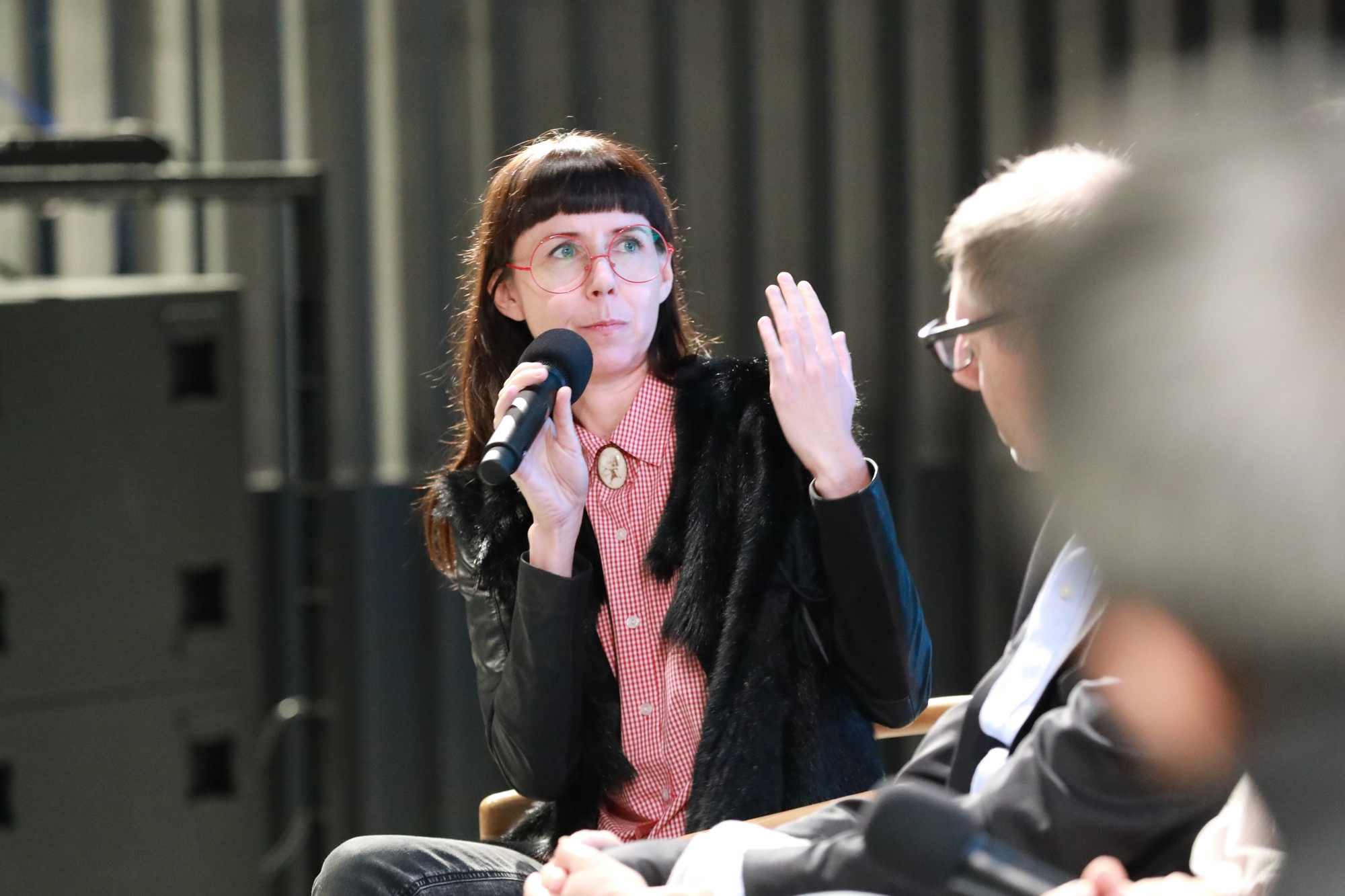Investigating Human-Robot Relations Through Art
Wed, Nov 21, 2018-
Tags
 Elena Knox is an Australian performance and media artist in the field of communication media. After obtaining her PhD at the College of Fine Art (currently UNSW Art & Design) at the University of New South Wales in 2015, she began presenting creative works highlighting the relationship between humans and humanoid robots in Japan and other countries. She originally came to Waseda University as a JSPS (Japan Society for the Promotion of Science) postdoctoral research fellow, after which Waseda’s ISS (International Scholar Services) service has provided her with the position of full time junior researcher.
Elena Knox is an Australian performance and media artist in the field of communication media. After obtaining her PhD at the College of Fine Art (currently UNSW Art & Design) at the University of New South Wales in 2015, she began presenting creative works highlighting the relationship between humans and humanoid robots in Japan and other countries. She originally came to Waseda University as a JSPS (Japan Society for the Promotion of Science) postdoctoral research fellow, after which Waseda’s ISS (International Scholar Services) service has provided her with the position of full time junior researcher.
For the Love of Robots
I had never worked with robots and artificial intelligence in my younger years. I was a practicing artist, performing both inside and outside of my university courses and across many art forms, from dance to theatre to music. I originally filmed my work to analyze and document it, and gradually through this detailed observation, I became interested in the field of gestures and rituals that people use to communicate, and how they differ by identities or genders. I began using the films to research and express these themes to create new art. For my PhD at the College of Fine Art in Sydney, I studied video and performance art. One day, the director of the UNSW Creative Robotics Lab introduced me to Professor Katsumi Watanabe, who is studying human-robot interaction at Waseda University. Through him, I got my first opportunity to work physically with a life-size Japanese robot, and as it turned out, those robots were a perfect medium to study repetitive gestures for my thesis and graduating exhibition. They allowed me to step slightly outside a purely human subjectivity, initiate routines and gestures through programming and choreography, and also provoke different effects on people. I ended up spending a lot of my PhD making videos and performances with Japanese robots.
Expanding my Artistic Reach
My personal encounter with Professor Watanabe and the robot created by Ishiguro Lab, Osaka University, was a stroke of luck that eventually led to my current position as a junior researcher at the Intermedia Art and Science Department at Waseda University. Waseda University was one of the first universities to make humanoid robots, and there are many excellent researchers on campus. Through this rich network of robotics culture, I’ve been able to collaborate with many other universities and organizations. Last year, I exhibited my work at the Artificial Intelligence Art and Aesthetics Exhibition in Okinawa, and held a solo exhibition in Tokyo of my previous video art using the humanoid robot Geminoid-F (Osaka University). I also presented my research on funerals for Aibo robots at the IROS 2018 International Conference on Intelligent Robots and Systems in Madrid. Another ongoing project is a live-streaming event called Omikuji (an AI fortune teller), in which a robot housed at Miraikan Museum in Tokyo communicates via my system with gallery visitors, thus far across China, Hong Kong and Korea. I’ve been very lucky to show audiences in many different countries a glimpse of the progression of Japan’s AI and robotic research through art.
The Future of Robots and Art
 As an artist, you must evolve along with the culture. This field is growing rapidly and in general people’s opinions on machines and AI are still developing, especially with regard to the role that they’ll play in the future. If AIs become more self-aware, it’s possible that they will start creating their own art. Humans may not even recognize this art when we see it, and in that sense, we would be neither artist nor audience of a new kind of art. The idea of this might be uncomfortable for some people. Everything depends on the extent to which we can integrate our own egos with machine subjectivities in future societies. That’s why one of my goals is to create large public performances using both physical robots and bodiless AI. I want to give the general public more opportunities to interact with real robots and AI, allowing them to form their own opinions that aren’t influenced by sensational media.
As an artist, you must evolve along with the culture. This field is growing rapidly and in general people’s opinions on machines and AI are still developing, especially with regard to the role that they’ll play in the future. If AIs become more self-aware, it’s possible that they will start creating their own art. Humans may not even recognize this art when we see it, and in that sense, we would be neither artist nor audience of a new kind of art. The idea of this might be uncomfortable for some people. Everything depends on the extent to which we can integrate our own egos with machine subjectivities in future societies. That’s why one of my goals is to create large public performances using both physical robots and bodiless AI. I want to give the general public more opportunities to interact with real robots and AI, allowing them to form their own opinions that aren’t influenced by sensational media.














